Disclosure: Please note that some links are affiliate links, and at no additional cost to you, we earn a commission if you make a purchase.
If you would like to support this website in some way, using these links will help do exactly that.
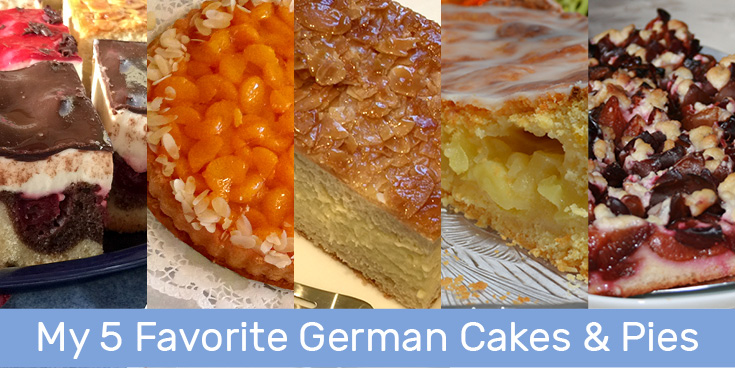
Our local grocery store in Florida sells “German Chocolate Cake” and when I moved to the United States years ago, a coworker told me to try it. You should have seen my face after the first bite. I expected rich layers of chocolate and what I got was a mouthful of chocolate cake with a pecan-coconut filling. Coconut in a German cake!? We do not have a tropical climate with coconuts growing on our trees. Obviously, this was the first and last time I ever bought this cake.
I want to introduce you to my favorite German cakes and pies. Since this is my personal list, the most-well known Black Forest Cake did not make the cut. It is a good cake, no doubt, but the 5 cakes and pies below beat the Black Forest Cake easily, at least in my opinion.
Donauwelle
The Donauwelle cake is named after the German river Danube, which originates near the Black Forest. Welle means wave and is very fitting, since the marbled cake does have wavy patterns. Embedded in the marbled cake are tart cherries, topped by buttercream and a chocolate frosting, that also has a wave structure to it. The tart cherries in the Donauwelle go great with the chocolate frosting and I love it when the cake is chilled and the buttercream is cold and refreshing.
Mandarinenkuchen
Another refreshing cake is the tangerine cake, made with a short pastry bottom, topped with a curd cheese mixture and garnished with tangerines. Besides the curd cheese mixture, I have also had this cake with a sour cream and also a cream cheese filling. No matter which way, this cake will melt in your mouth and the sweet tangerines go great with the tart cream filling.
Bienenstich
Literally translated this cake is called bee sting cake and it is filled with delicious vanilla cream, finished with an almond & honey layer on top. While absolutely yummy, it can be a bit intimidating to eat this cake on a first date, because the cream filling will ooze out of all sides, when you try to cut through the crispy top layer.
Gedeckter Apfelkuchen
This is an apple cake variation with a classic shortcrust top layer, translated to covered apple cake and, to me, most reminiscent to the classic American apple pie. The German version has a perfect balance of sweetness and acidity from the apples, certainly much less sweet than its American counterpart.
Pflaumenkuchen
The last one in this list and I saved the best for last. This plum cake is my absolute favorite and widely available July through October during plum season. The yeast dough hold the plums in place, all you have to do is top it with some fresh whipped cream and it is heaven on a plate.
Follow Along
If you enjoyed this article, or these topics sound interesting to you, you'll love our weekly newsletter. You'll receive a free Germany Packing list for signing up, and you'll receive each week's newest posts every Friday. Thank you for reading!

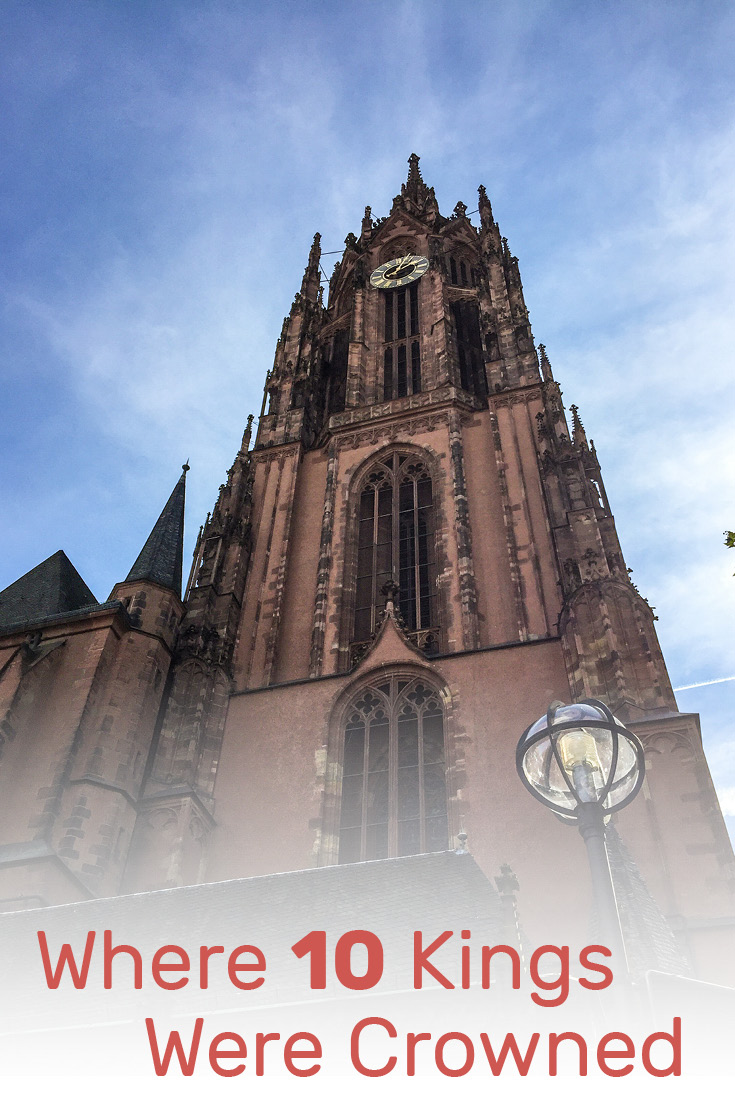
Not just a parish church, St. Bartholomew's Cathedral in Frankfurt am Main is unique with it's honorific designation as Cathedral. Between 1356 and 1792 it was center stage for initially electing the kings of the Holy Roman Empire of the German Nation, then ultimately where kings were crowned as well, ten kings in total.
This spot in Frankfurt has gone through at least five religious structures, dating back as early as 680 AD to its original Merovingian Chapel form.
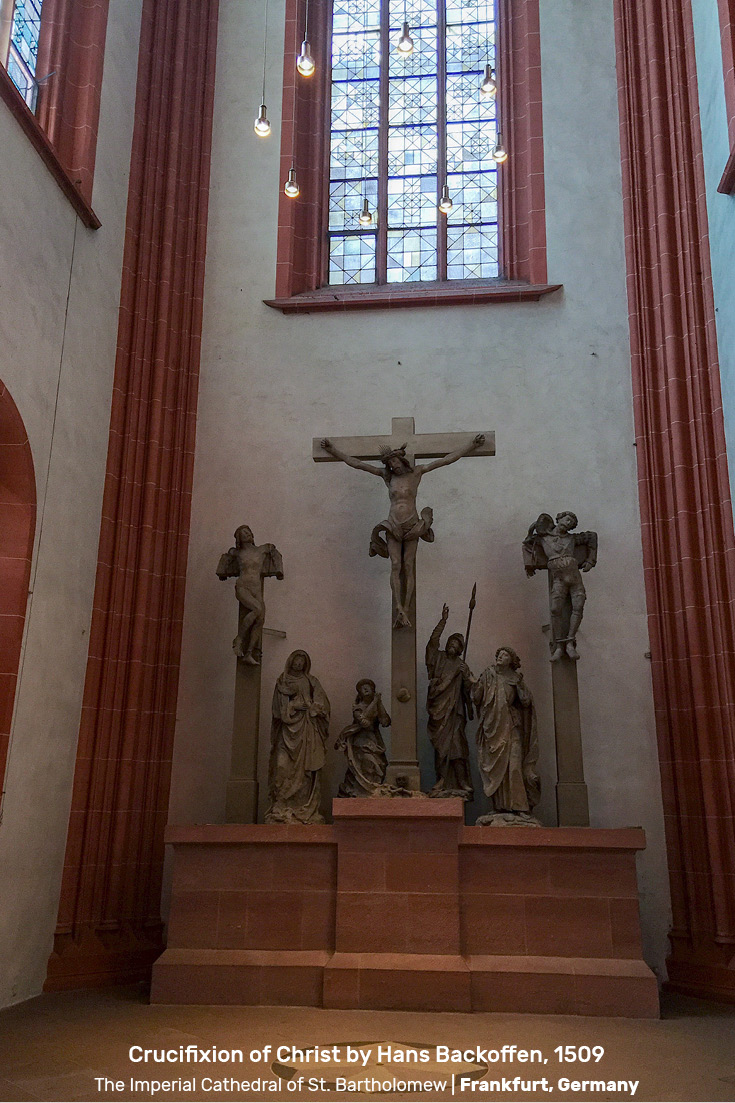
During reconstruction from the 1867 fire, the original 1415 plans by Madern Gerthener for a gothic spire atop the tower was finally brought to life. This Neo-Gothic tower is romantic and is a jewel on Frankfurt’s crown of a skyline. Nestled into the old part, you turn a street corner and it's a surprise.
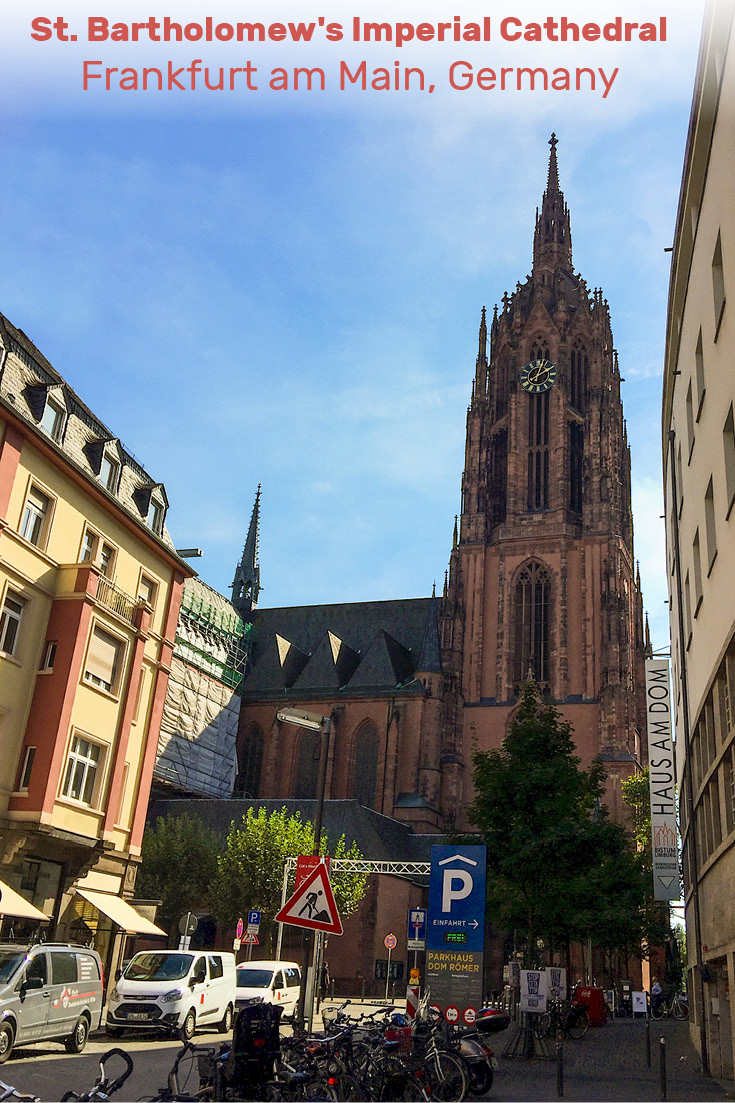
Utilizing the nearby local red sandstone, which can be admired throughout the city of Frankfurt, after being restored in 1992-1994 the visual effect inside and out is unforgettable.
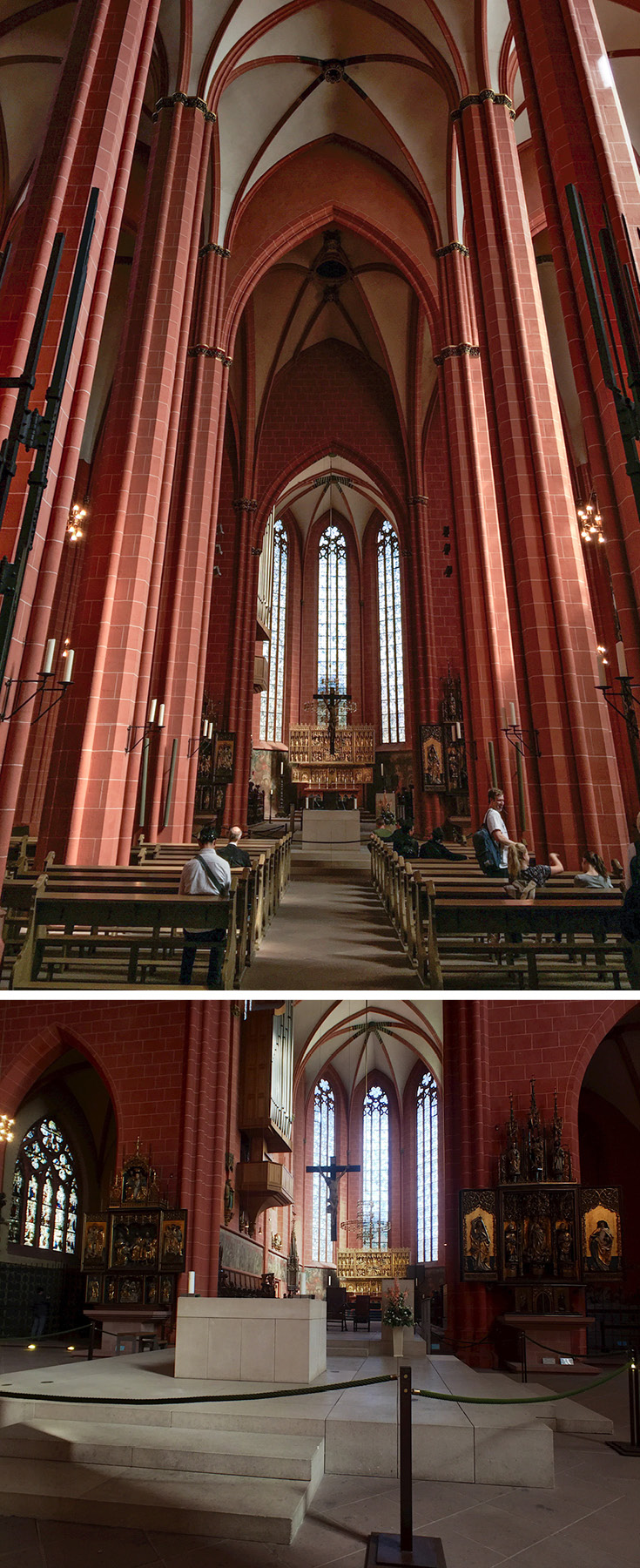
Art Imitating Art
When I first saw the organ in the southern transept it reminded me of Caspar David Friedrich's painting, The Sea of Ice. Do you see it too?
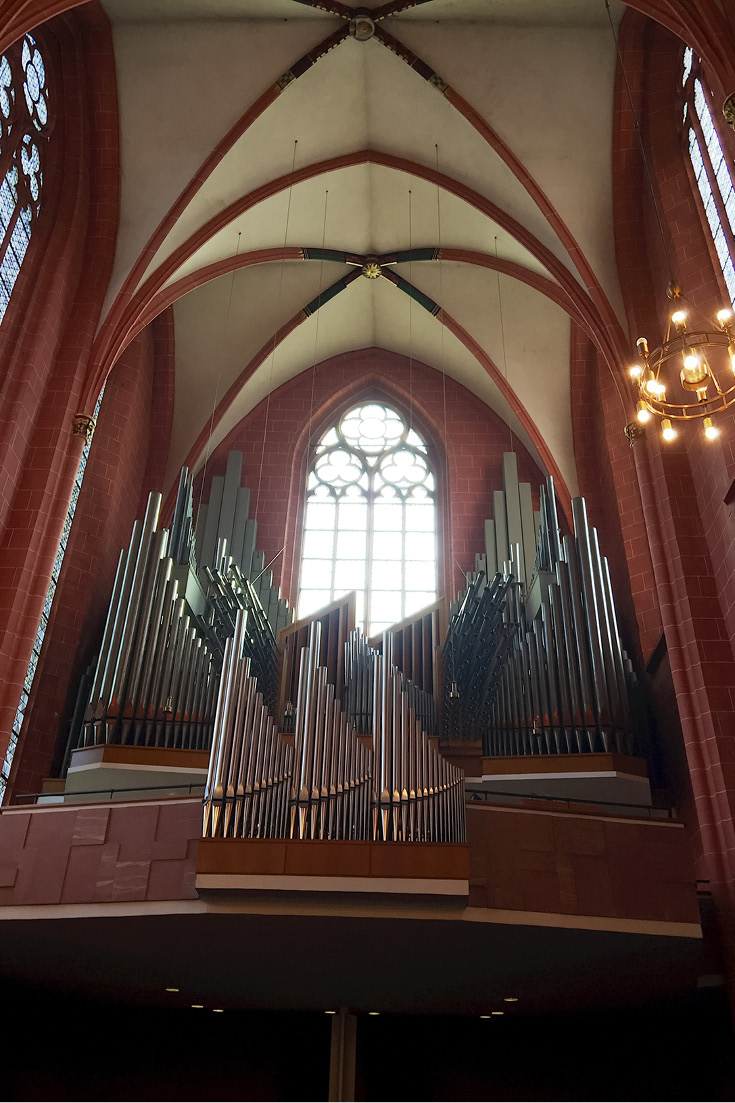
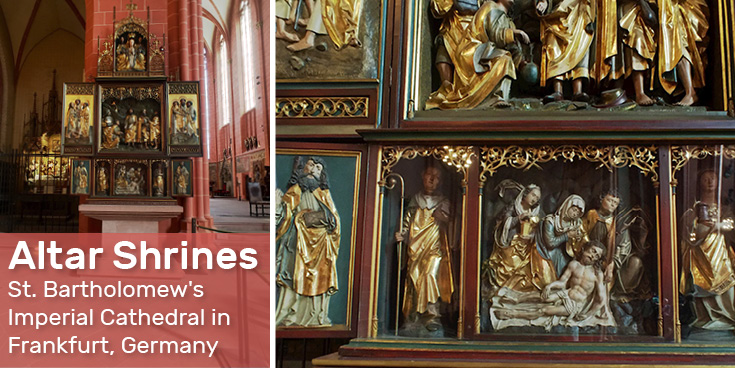
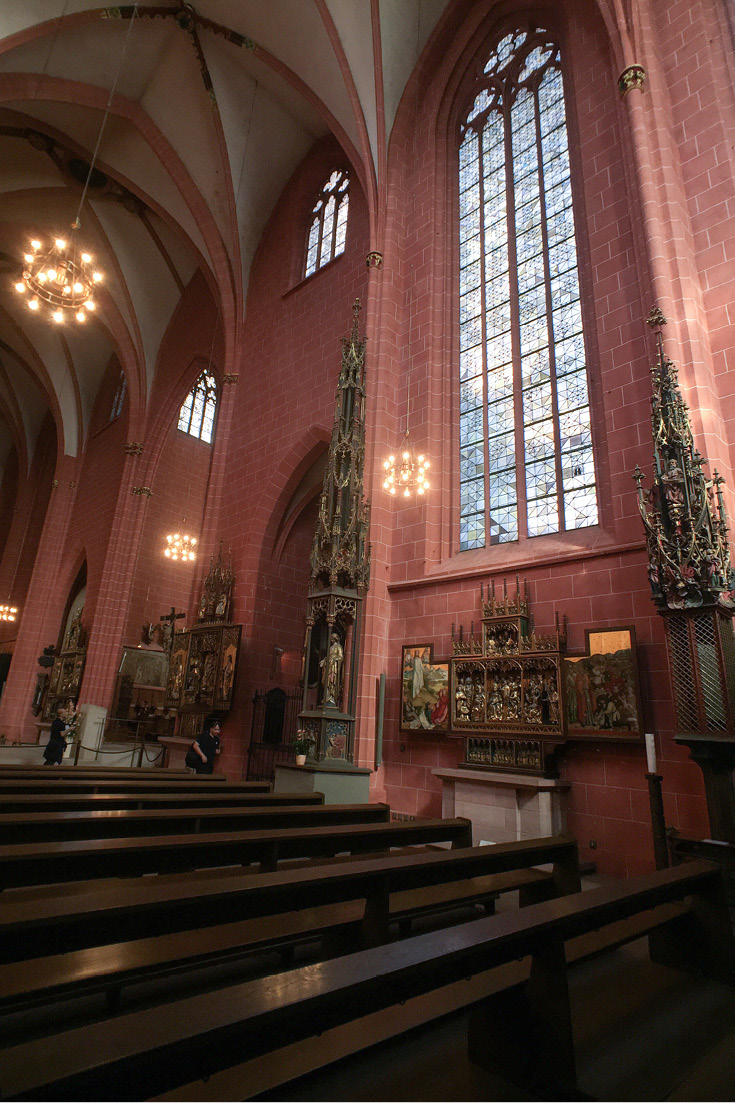

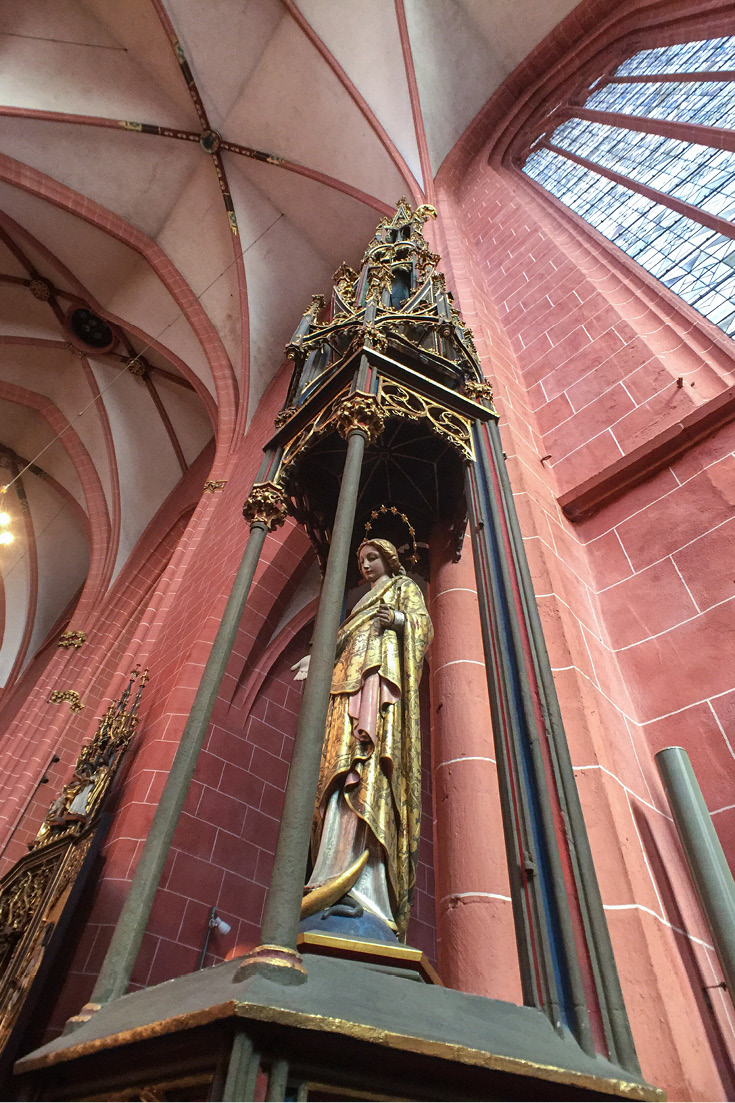
St. Mary's Chapel
And if you weren't blown away by the altar shrines, in St. Mary's Chapel, an intimate little alcove, you'll find this mammoth-sized stone-carved depiction of the Death of the Virgin, created in 1434-1438. Carved in stone! Its stunning.
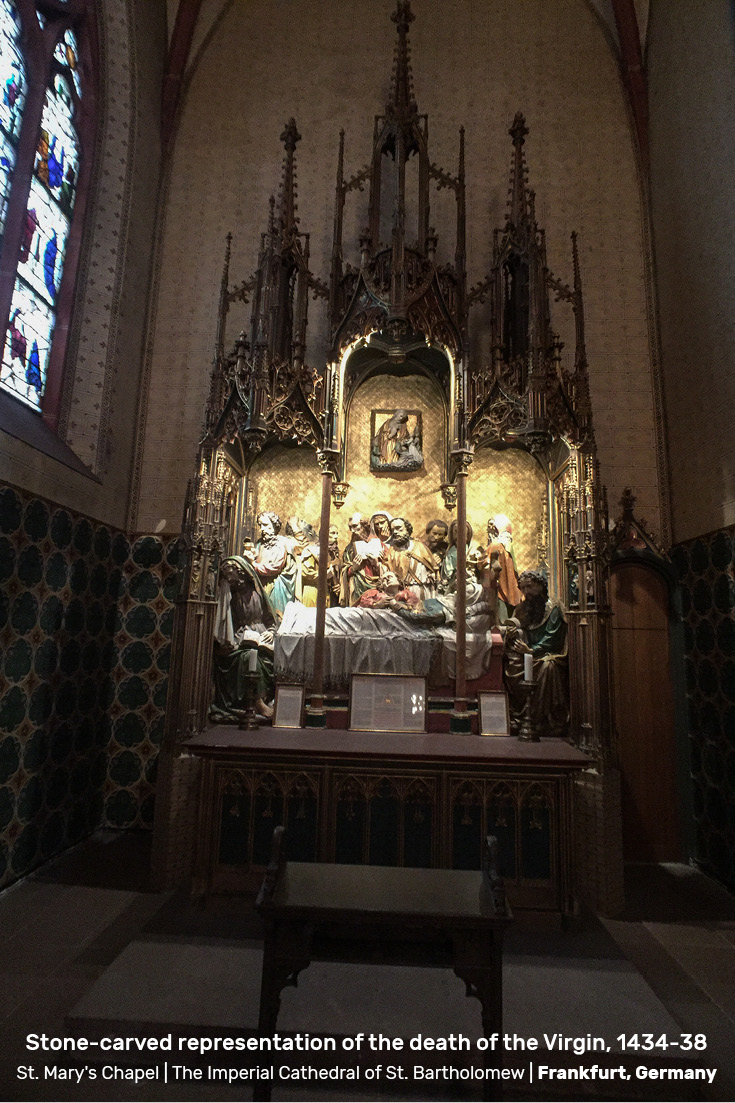
Generosity of Frankfurt's Citizens
One wall in the northern transept seemed to have an unusual arrangement of items on the wall. A very ornately framed "Lamentation of Christ," by Anthony van Dyck and several stone monuments. This section of the cathedral is a testament to the generosity of the Frankfurt citizens. Since this cathedral isn't a typical cathedral where a Bishop ruled and could install works of artwork to fill the walls, this cathedral reaped the generosity of its own every day citizens, making it a true Cathedral of the people.
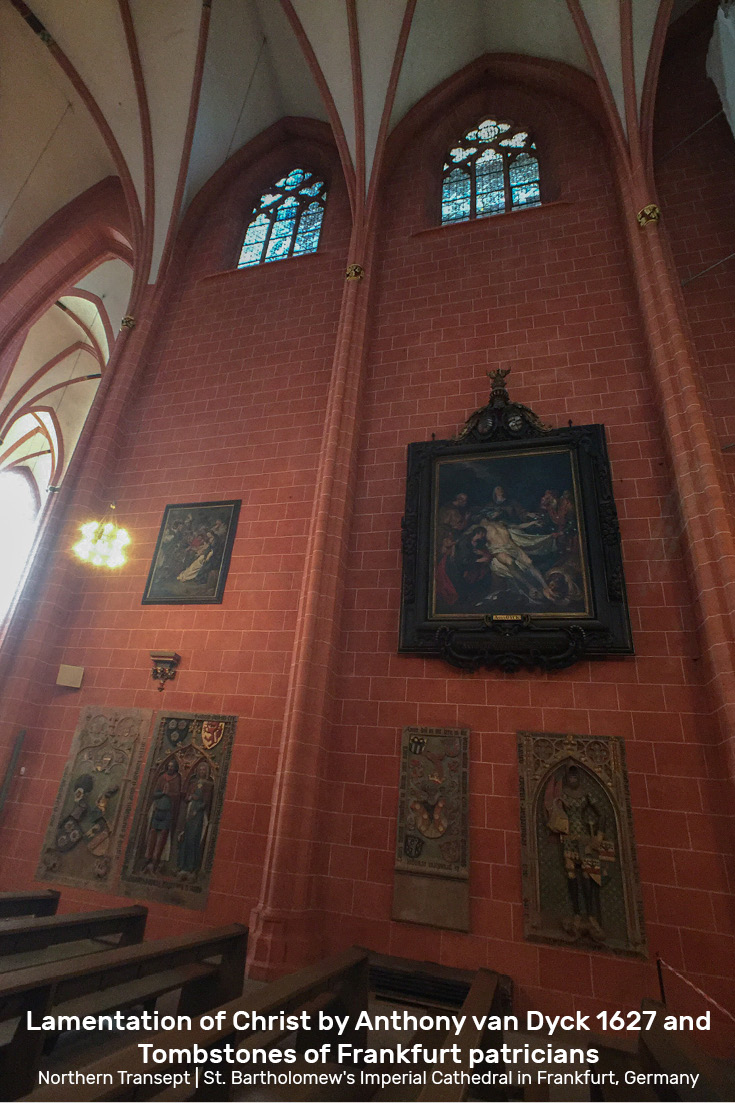
Follow Along
If you enjoyed this article, or these topics sound interesting to you, you'll love our weekly newsletter. You'll receive a free Germany Packing list for signing up, and you'll receive each week's newest posts every Friday. Thank you for reading!

Whenever I travel to Germany and have the chance to eat German sausages, I take that chance. Sausages have a long tradition and today about 1,500 sausage varieties are produced in Germany. The German newspaper Die Zeit posted a great picture several years ago, showing an abundance of regional sausage varieties. Quite overwhelming, but I am here to help and guide you to the best German sausages, at least the ones I enjoy the most.
#1. Bockwurst
The Bockwurst originated in Berlin, but is known all over Germany nowadays. The inventors were the Berlin innkeeper Robert Scholtz and his butcher, Benjamin Löwenthal. Back in 1889, Robert Scholz served bock beer (stronger, malty taste beer) together with a coarse crackling sausage, consisting only of veal and beef. The pairing with the bock beer gave the Bockwurst its name. Today, you can find Bockwurst at many pubs, served with mustard and a bread roll (pictured above). Also, it is served warm, either out of a pot with hot water or heated in a microwave. I prefer the water method, just make sure not to boil them, otherwise they will crack.
#2. Frankfurter Würstchen
Frankfurter sausages, often abbreviated to simply Frankfurter, can only be produced by butcher shops in the greater Frankfurt area and has an actual trademark dispute dating back to 1929. A butcher in Berlin, who made and sold “Frankfurter Würstchen”, was sued by 13 butchers in Frankfurt and lost the lawsuit. If you are in the Frankfurt area, these sausages are a must. Very mild, go great with ketchup or mustard and most comparable to an American “hot dog” sausage. By the way: their close twin brother, the Wiener Würstchen, is made with pork and beef, while Frankfurters are made exclusively from pork.
#3. Frankfurter Rindswurst
And while we talk about my former homeland, we have to talk about the Frankfurter Rindswurst, also. This sausage was and still is produced by the well-known butcher shop of Gref-Völsing in Frankfurt.

Dieses Foto von Gref-Völsings Rindswurst wurde von TripAdvisor zur Verfügung gestellt
The shop of Karl Gref and his wife Wilhelmine Völsing first opened on January 18, 1894. Back then, in order to win over jewish customers, Gref-Völsing offered 100% beef (German word is Rind) sausages, which corresponds with the Jewish food laws and can be eaten as kosher. The Frankfurter Rindswurst is usually heated in a pot with hot water, or occasionally grilled. My favorite way to eat them is cut up in thick lentil soup, the way my grandmother used to prepare them.
#4. Weisswurst
The name Weisswurst translates to white sausage and is most common in the Bavarian state capital Munich, but also in other parts of Bavaria. According to legend, the Weisswurst was created by the innkeeper Joseph Moser on February 22, 1857, when he wanted to produce veal sausages, but realized that he ran out of veal casings. Since his guests had already ordered the first sausages, he quickly filled the veal meat into thicker swine casing. Instead of roasting them, he heated them in hot water, fearing that the casings would burst when roasted. The guests loved the new preparation method, especially since the Weisswurst had to be made fresh every morning, due to the lack of refrigerators or freezers. And even though we have all the cooling and preservation methods known to mankind today, the Weisswurst is traditionally still eaten before the clock strikes noon. Old habits die hard. Try yours with a pretzel, sweet mustard and a beer.
#5. Bratwurst
The bratwurst is the most iconic and well known German sausage, often sold as “brats” in the United States. You will find the Bratwurst sold during German summer festivals, as well as on Christmas markets in the wintertime. The name Bratwurst derives from the German word Brät, which translates to finely chopped meat with the main ingredient being pork. Traditionally Bratwurst is grilled over a wood fire or electric grills, giving it nice marks on the outside and making it the perfect to-go food in a bread roll or with some curry ketchup on top. This would also be my favorite kind of Bratwurst, called Currywurst. We already wrote about it here.
Follow Along
If you enjoyed this article, or these topics sound interesting to you, you'll love our weekly newsletter. You'll receive a free Germany Packing list for signing up, and you'll receive each week's newest posts every Friday. Thank you for reading!

Photo Credits
Shared Through https://creativecommons.org/licenses/by-sa/2.0/
#1: Bockwurst Photo by: Flickr User pure man meat
#2: Frankfurter Würstchen Photo by: Jessica Spengler Flickr User wordridden
#3: Frankfurter Rindswurst from Gref-Völsing in Frankfurt Photo via Trip Advisor
#4: Weisswurst & #5 Bratwurst Photos by Flickr User cyclonebill
